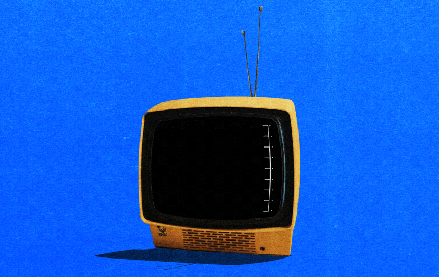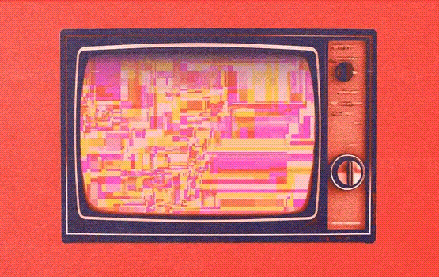Future of TV Briefing: WTF is IAB Tech Lab’s device attestation tactic to combat CTV ad fraud?

This Future of TV Briefing covers the latest in streaming and TV for Digiday+ members and is distributed over email every Wednesday at 10 a.m. ET. More from the series →
This week’s Future of TV Briefing breaks down the CTV ad industry’s new tool for fighting device spoofing.
- WTF is device attestation?
- Netflix’s video podcast plans, Apple’s (lack of) ad plans and more
WTF is device attestation?
In the cat-and-mouse game of CTV ad fraud, the cat has a new mousetrap. IAB Tech Lab has introduced device attestation as a new system for combating device spoofing, or fraudsters imitating CTV devices in order to siphon streaming ad dollars.
While device attestation implements a new approach for fighting device spoofing, “it’s not meant to be the silver bullet that solves all ad fraud,” said IAB Tech Lab vp of product Jill Wittkopp. “It is another tool in the toolkit to use to put together the picture of where you’re buying and making sure that you have trust in your partners.”
That being said, device attestation does introduce a potentially powerful new tool against device spoofing – if enough of the CTV ad industry moves to adopt it.
Haven’t companies been trying to combat CTV fraud forever? What’s different about device attestation compared to all the other tactics that have been tried?
Usually companies try to check that an ad is being served on an actual CTV device by effectively making educated guesses based on the data available to them related to the ad impression, like the corresponding device’s IP address. This is like a liquor store clerk verifying a person’s age based on how babyfaced they are or how much their voice cracks; it’s not a bad gauge, but not foolproof.
By contrast, device attestation enlists the actual CTV device to verify it is in fact an actual CTV device, which is like the liquor store clerk asking for a person’s driver’s license.
“Instead of collecting a bunch of signals to try and understand if this device looks suspicious, you’re actually able to get some positive assertions from device manufacturers through their attesters to say, ‘This is real.’ The concept of a positive signal instead of aggregating negative signals is really a different approach to how we’ve been tackling fraud detection as an industry,” said Wittkopp.
How does device attestation work?
An ad is served to a CTV app. The CTV app makes a call to a verifier – ex. an ad verification firm – to say, “Hey, is this ad being served on a real CTV device?” The verifier tells the CTV app to ask the CTV device – or the “attester” in the specification’s parlance – for a token to prove it’s a legitimate CTV device. The CTV device asks for a token from an issuer – ex. a content delivery network like Cloudflare – and then passes that token to the CTV app, which passes it to the verifier. The verifier checks the token’s authenticity.

Wait, so this process happens after an advertiser has already bid on an impression?
Yeah. That’s so that a person’s streaming experience doesn’t get bogged down by the process prolonging the time it takes for an ad to load and an ad break to end. To that end, this process isn’t meant to happen for every ad impression either. Instead companies should just be taking samples of impressions to confirm that ads are being served on legitimate CTV devices.
“There are real bandwidth limitations and user experience limitations that we want to make sure we’re conscientious of. The implementation guidance notes that this really should be sampled from both the verification provider perspective and honestly many of the device manufacturers will also have rate limits, which is the same thing in application. Not all requests are expected to go through. And so the way to use this from a buyer perspective is in aggregate at the seller level,” Wittkopp said.
Will I have to get a new smart TV or CTV device that supports device attestation?
No. Amazon and Apple have signed on for their CTV devices to support device attestation. That doesn’t necessarily mean your 13-year-old Apple TV is equipped for device attestation, but the support isn’t limited to just the companies’ latest CTV hardware either.
“It’s not something that’s requiring new hardware existing in homes,” Wittkopp said.
You mentioned Apple and Amazon are supporting device attestation, but that leaves a lot of big CTV hardware manufacturers out: Samsung, Roku, Vizio, LG, etc. What’s up with that?
Great question…
“I would say we were really just focused on making sure that we had a solution that fit multiple purposes that was already existing in market and some of the use cases. And the law of large numbers associated with sampling really means that even with small support, you would eventually be able to get to the aggregated answer that you’re looking for. We obviously want more participants. We’ll continue to reach out to others in the space to see if they want to stand up the attester and issuer ecosystems. But at the end of the day, we want to prove that something worked across multiple participants in the ecosystem. And if we can do that with what we have, then we expect that it’ll be beneficial for others to join,” Wittkopp said.
Mmkay. What about support from streaming services?
Well, a streaming service will need to have adopted the 1.6 version of IAB Tech Lab’s Open Measurement SDK, which was just released [checks watch] last week. But the OM SDK program has an annual compliance check, said Wittkopp, so companies should be upgrading to be able to support device attestation within the next year.
Why did it take so long for something like device attestation to be introduced?
IAB Tech Lab wanted to have a privacy-safe means of doing this device attestation since it’s being done at the individual device level. And it finally found that in the Privacy Pass protocol, which has been standardizes by standards body Internet Engineering Task Force and gives the CTV device a way to assert its identity without passing personally identifiable information.
“From a standards perspective, we wanted something that had more foundation to it, balancing consumer privacy with the need for fraud detection,” said Wittkopp.
What we’ve heard
“This really isn’t changing the way that we’re selling into the market. Our hope behind this metric is that we are just being more transparent and clear about how our audiences are interacting with the service.”
— Netflix’s Amy Reinhard after I asked if the company would charge advertisers based on its new Monthly Active Viewer metric
Numbers to know
41%: Percentage share of LGBTQ characters that are on TV/streaming shows that will not return next year.
128 million: Number of streaming subscribers that Warner Bros. Discovery had at the end of the third quarter of 2025.
16%: Percentage of IP address-to-email address matches that are accurate.
5%: Percentage of AMC Networks employees that the company will lay off.
1,600: Number of additional employees that Paramount Skydance will lay off.
What we’ve covered
Brands and influencers are not including intellectual property clauses addressing AI in their deals:
- Five creators confirmed they hadn’t added any AI-related IP clauses to brand deal terms this year.
- The creators may be relying on existing language related to name, image and likeness protections.
Read more about influencer marketing deals here.
Inside Reuters’ agentic AI video experiment:
- Reuters has hired its first AI video producer to oversee the creation of an AI agent for video production.
- The AI agent would be tasked with creating rough cuts, but humans would still be involved in the overall video editing process.
Read more about Reuters here.
Netflix’s ads boss on the next phase, and how Amazon accelerates it:
- Netflix has formulated a new way of self-counting its ad-supported audience.
- The streaming service is rolling out new ad targeting options, including marital status and household income.
Read more about Netflix here.
What we’re reading
Netflix’s video podcast plans:
Netflix is in the market for original video podcasts in addition to licensing existing video podcasts, according to Bloomberg.
Apple isn’t planning to roll out an ad-supported tier for its streaming service, according to The Hollywood Reporter.
NBCUniversal’s parent company is kicking the tires on a potential bid for Warner Bros. Discovery, according to Reuters.
The animated show has seen viewership double this year compared to 2023 as it’s aired episodes critical of President Donald Trump, according to The New York Times.
Want to discuss this with our editors and members? Join here, or log in if you're already a member.
More in Future of TV

‘A year of loose ends’: Digiday editors share top takeaways from 2025
This year was filled with major developments – from Netflix’s planned WBD deal to Omnicom’s acquisition of IPG to Google’s ultimately cookie reversal – and Digiday editors Sara Jerde and Seb Joseph help to recap the year that was (and wasn’t).

Future of TV Briefing: How the future of TV shaped up in 2025
This week’s Future of TV Briefing looks back at the top topics and trends that overtook the TV, streaming and digital video industries in 2025.

Programmatic agency execs speak out on CTV transparency
At the recent Digiday Programmatic Marketing Summit, agency executives spoke out — on stage and in behind-closed-door town hall sessions — on how they see transparency in CTV.








